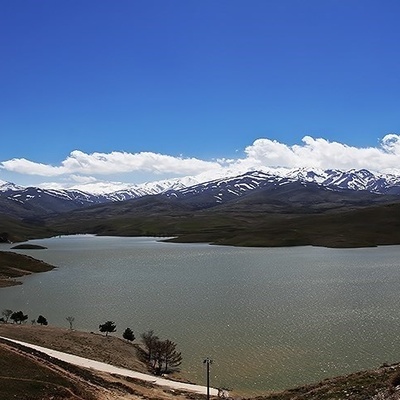SAEDNEWS: Ashuradeh Island, located in the Caspian Sea near Iran, is known for its pristine natural landscapes, diverse wildlife, and rich cultural heritage, making it a perfect destination for eco-tourism and adventure seekers.
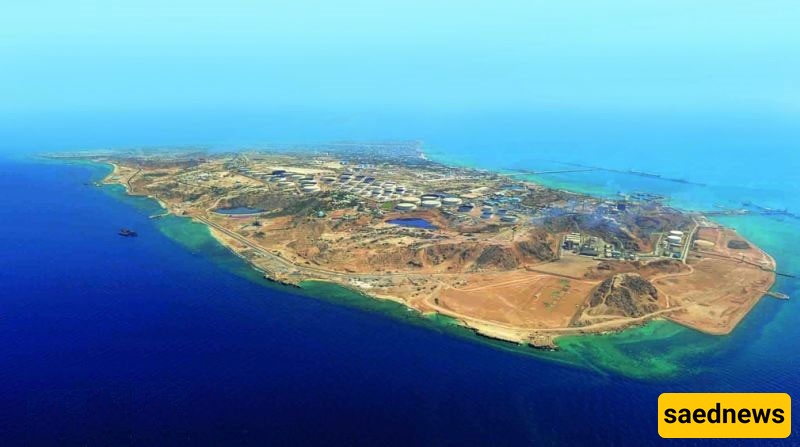
Northern Iran, unlike the Persian Gulf and the open waters of the south, does not have famous small or large islands, and if you intend to visit an island in the northern regions, Ashuradeh is your only option; an island whose image is intertwined with a beautiful wooden bridge and is considered one of the attractions of Golestan Province.
Ashuradeh, the only Iranian island in the Caspian Sea, is an uninhabited and abandoned area in Golestan Province. Every year, thousands of tourists travel to Bandar Torkaman to visit this unique island and explore this historic region, reaching the island by boat.
Ashuradeh is the largest Iranian island in the Caspian Sea, located at the center of the Miankaleh Peninsula near Bandar Torkaman. Bandar Torkaman is one of the northern ports of Iran and one of the most famous ports on the eastern shores of the Caspian Sea, situated in Golestan Province. The coast of Bandar Torkaman is the closest seaside to the city of Gorgan.
Ashuradeh Island is located 10 kilometers from Bandar Torkaman and only 40 kilometers from Gorgan. The island is bordered to the north by the Caspian Sea, to the east by a narrow strait called "Chapqoghli Strait," to the west by the natural Khazini Canal and the continuation of the Miankaleh Peninsula, and to the south by the Gulf of Gorgan. The island’s longitude is 53.8500 and its latitude is 36.8333. Ashuradeh is considered one of the most popular tourist attractions in Bandar Torkaman, visited by many tourists each year.
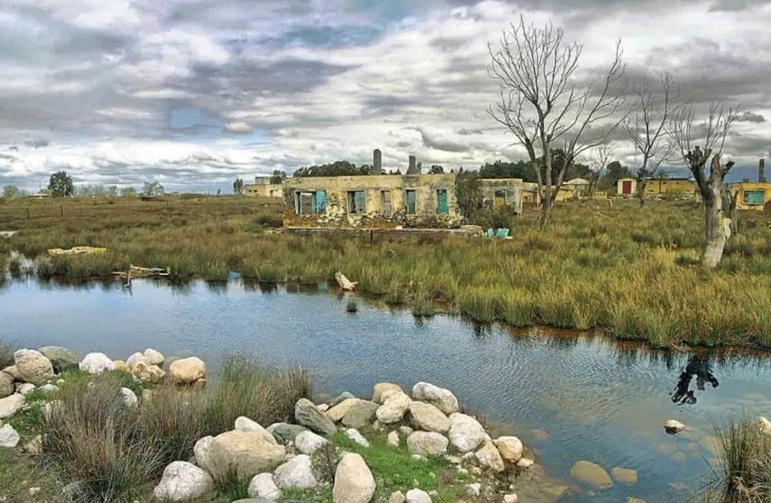
Ashuradeh is the name of an island located at the center of the Miankaleh Peninsula. Over the centuries, due to the rising water levels of the Caspian Sea, it was separated from the main landmass of the Miankaleh Peninsula by the natural Khazini Canal. The elevation of Ashuradeh above open sea level is 26 meters. Most historical sources state that Ashuradeh was originally an archipelago consisting of three islands: two small eastern islands and one large western island. However, with the rise of water levels, the two smaller islands at the end submerged, and currently, only one island remains. Until a few years ago, the main Ashuradeh Island had an area of 1,200 hectares, but flooding and rising sea levels have reduced it to only 400 hectares.
Ashuradeh Island is significant for several reasons. In 1975, it was designated as one of the world's biosphere reserves (internationally protected biological areas) and registered globally. Ashuradeh is one of the most important wetlands in the world listed under the Ramsar Convention and recognized as one of the 59 internationally registered natural reserves (in 1980) and one of Iran’s most important wildlife refuges.
Ashuradeh Island has a rich and eventful history. Due to its geographical location and its natural habitat, the island has always attracted attention throughout history. According to experts, the Miankaleh Peninsula, where Ashuradeh is located at one corner, was probably formed on the alluvial deposits of the Goharbaran River delta in Neka.
Some historians believe that Ashuradeh is in fact the same island called "Abaskun," to which Sultan Muhammad Khwarazmshah fled during the Mongol invasion of Iran, and where he died in 1220 AD due to illness.
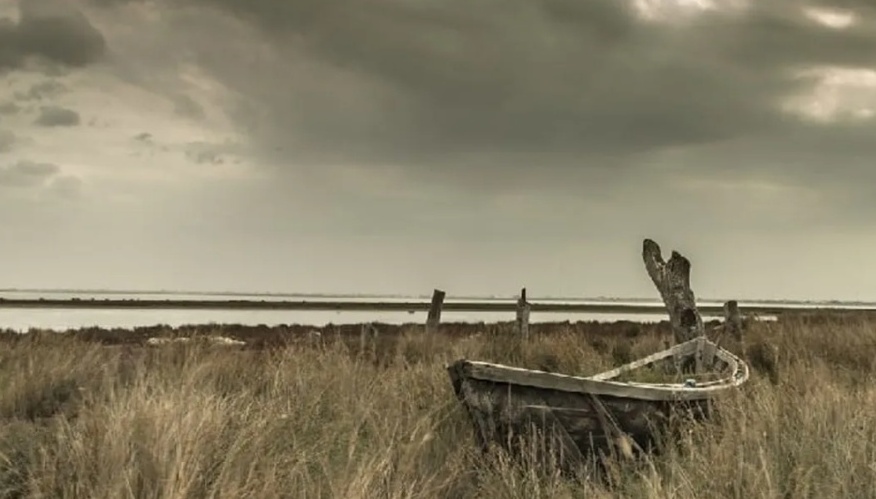
During the Safavid era, Ashuradeh was used as a hunting ground and the court built fortresses and castles on the island for residence. However, it should be noted that the name "Ashuradeh" was not mentioned in any historical books or travelogues before the Qajar period. Important events took place on Ashuradeh during the Qajar era, and from that time on, the island is mentioned by the name Ashuradeh in many historical sources.
The construction of Ashuradeh, according to some historical sources, goes back to the desire and efforts of Peter the Great, who aimed to expand Russia's borders, dominate northern Iran, and invade India. However, these objectives were not realized due to Peter the Great’s death and the beginning of Nader Shah Afshar’s reign in Iran, and the Russians were forced to retreat. During this period, trade between northern Iran and Russia was interrupted, and the Turkmen uprisings worsened the trade situation.
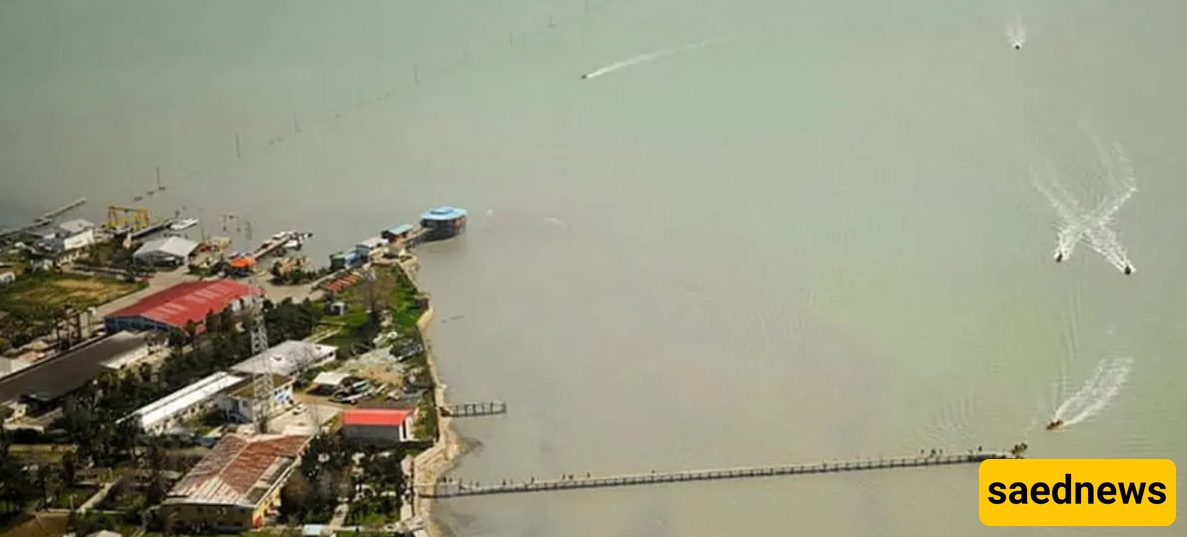
In 1781, Vovanovich intended to build a new commercial point and a military base to support it in the Anzan region, away from Turkmen-populated areas; however, he was opposed by Agha Mohammad Khan Qajar and his plan failed. Following the wars between Russia and Iran, which ultimately led to the signing of the Treaty of Gulistan and the Treaty of Turkmenchay during the reign of Fath-Ali Shah, Russia was given an advantageous opportunity.
At that time, Ashuradeh was a major hub and destination for many commercial ships and held exceptional commercial importance; therefore, it became one of the politically disputed areas between Iran and Russia. These disputes sometimes escalated into clashes between Turkmens supporting Iran and those supporting Russia.
During the reign of Mohammad Shah Qajar, Turkmen bandits and pirates lived on Ashuradeh and some parts of the Miankaleh Peninsula. Qiyat Khan, one of the leaders of the Jafarbay Turkmens (who supported Russia and opposed Iran), attacked Astarabad (modern-day Gorgan) and after looting and taking hostages, ordered the captured government soldiers to be drowned at sea. After this event, Mohammad Shah Qajar decided to suppress the Turkmens; however, since they were stationed on Ashuradeh Island, he needed warships to reach them.
Mohammad Shah Qajar sought help from the Russians to overcome the Turkmens on Ashuradeh; according to treaties between the two countries, only Russia had the right to operate warships in the Caspian Sea and could suppress the rebels. The Russians, who had recognized the special importance of northern Iran, especially the southeastern Caspian Sea, ten years earlier, quickly stationed five of their warships on the shores of Ashuradeh and entered the region.
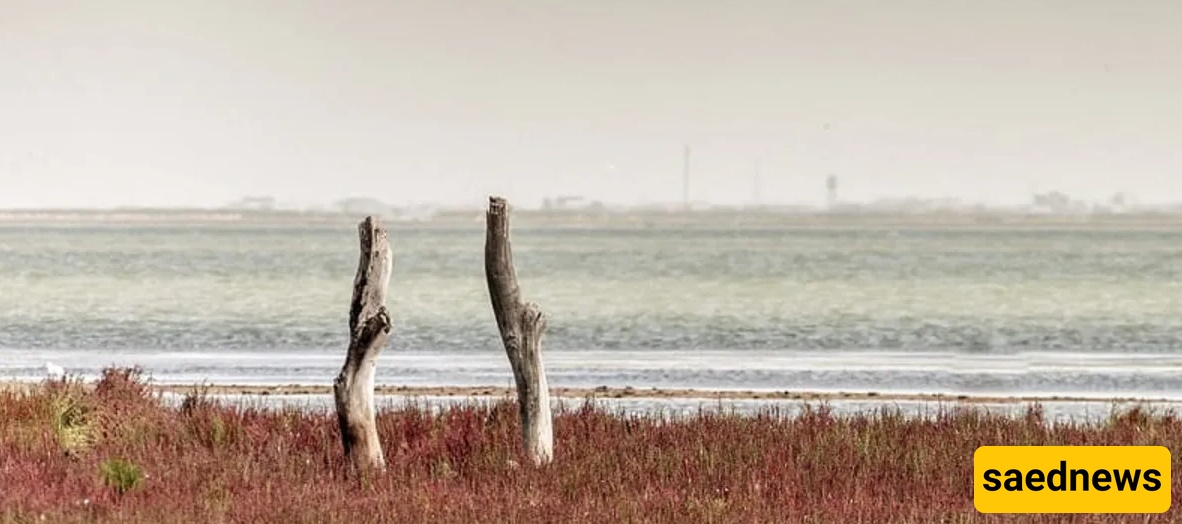
The Russians’ first action was to seize the Miankaleh Peninsula and establish a military base on the eastern part of the island. Interestingly, before the Russian ships arrived in the region, Ardeshir Mirza, governor of Mazandaran, had already managed to suppress the rebellious Turkmens. The Russians not only did not assist in suppressing the rebels, but after reaching Husain Qoli Bay, they began trading with the Turkmens. Following these events, the Russians occupied Ashuradeh Island for many years—from World War I until the end of World War II.
The Russians justified their presence on Ashuradeh by citing the need to secure their commercial ships and the unresolved ownership status of the island in treaties between Iran and Russia. After the agreement, the Russians built a military barracks, a clinic, residential houses, and a wooden church on the island.
Ashuradeh Island
"Ibot," the British ambassador in Rasht, visited Ashuradeh a few years after the Russian occupation and described the Russian settlements and existing buildings there. Four years later, he visited the island again and provided a more detailed report. It is important to mention that at that time, Ashuradeh was a place of colonial rivalry between Tsarist Russia and Britain. Political and military conflicts between Iran and Russia over Ashuradeh reached their peak during the reign of Naser al-Din Shah and the premiership of Mirza Taqi Khan Amir Kabir.
Finally, after the fall of the Tsars, the Russian Communist Revolution, and the establishment of the Soviet government, on February 26, 1921, the Iran-Russia Treaty of Friendship was signed in Moscow, in which Russia committed to end its occupation of Ashuradeh. In this treaty, Firuzabad and its surrounding lands, which had been transferred from Iran to Russia on May 28, 1892, were also returned to Iran.
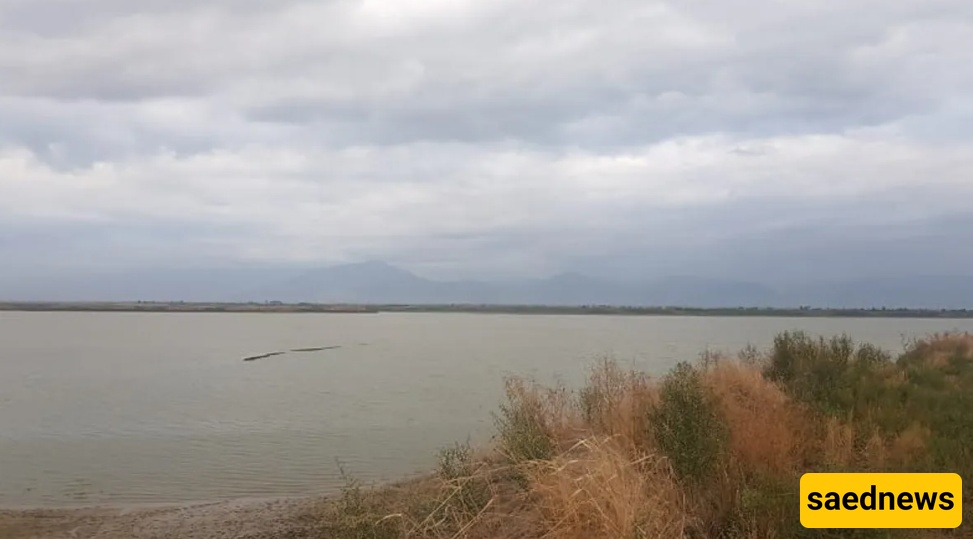
Since the Russian occupation of Ashuradeh, no traces remain. The wooden church built by the Russians has completely disappeared, and the Russian fortress, which had been restored during the reign of Reza Shah Pahlavi and was used as a gendarmerie post, has been demolished. The Russian minister’s residence is also in a state of decay.
After the Russians withdrew and Ashuradeh was liberated, the island remained uninhabited until the early 1950s. At that time, following the end of the contract between the Iran Fisheries Company and Russia, and the construction of port facilities by the Northern Iran Fisheries and their settlement on Ashuradeh, people began to inhabit the area.
Ashuradeh had facilities including a gendarmerie post, a rural cooperative company, a middle school, a shop, a cinema, fabric stores, a grocery store, a coffeehouse, a mosque, and a Hosseiniyeh (religious congregation hall), and over 1,000 people lived on the island until years ago; however, rising water levels and flooding in 1993 forced the residents to leave the area. The inhabitants of Ashuradeh were engaged in occupations such as animal husbandry, labor, craftsmanship, and fishing. Currently, only fishermen and Fisheries employees reside on Ashuradeh, while the other people of the island live in surrounding cities.

Ashuradeh, Ashur Adeh, or Ashir Adasi in the Turkmen language, consists of two parts: Ashir (Ashur) and Ada (island), meaning "Ashur Island." Among the Turkmens, this island is also known as "Mal Ashir" because in ancient times, Ashuradeh held special importance for Turkmen herders. They used to transport their livestock by boat from the coast to the island for grazing. In Turkmen, "Mal" means "livestock" and "Ashir" is the verbal noun meaning "to deliver" or "to bring."
The vegetation on Ashuradeh Island includes raspberry bushes, a type of wild thorn, and sour pomegranate trees. Some historical documents also mention the cultivation of date palms, cotton, and sugarcane on the island; however, today, aside from some fruit trees found in old houses, there is no other agricultural coverage in the area.
Animals living on the island include jackals, foxes, rabbits, fish, pheasants, partridges, and both migratory and non-migratory seabirds such as various gull species, Caspian gulls, sandpipers, sea swallows, and glaucous gulls. There are also different species of swans, ducks, flamingos, pelicans, and geese. Other animals on Ashuradeh include wild boars and a type of wild horse that can drink the salty sea water and has a short lifespan. In the early 20th century, the island was also home to the Caspian tiger; unfortunately, these tigers became extinct due to overhunting and environmental problems.
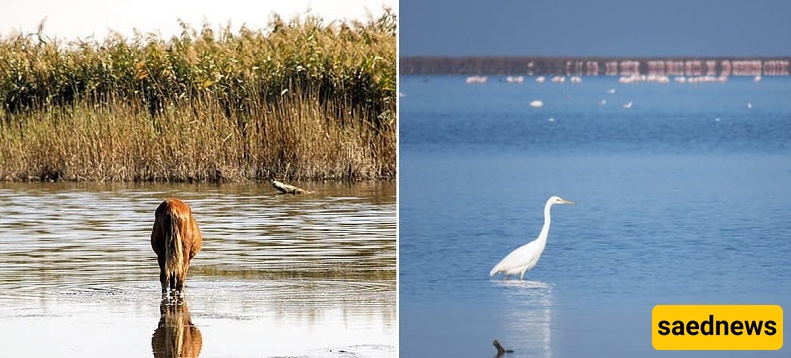
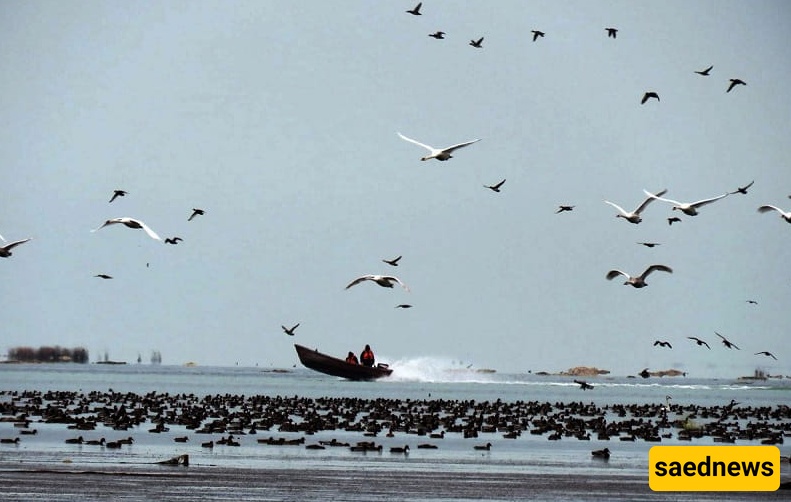
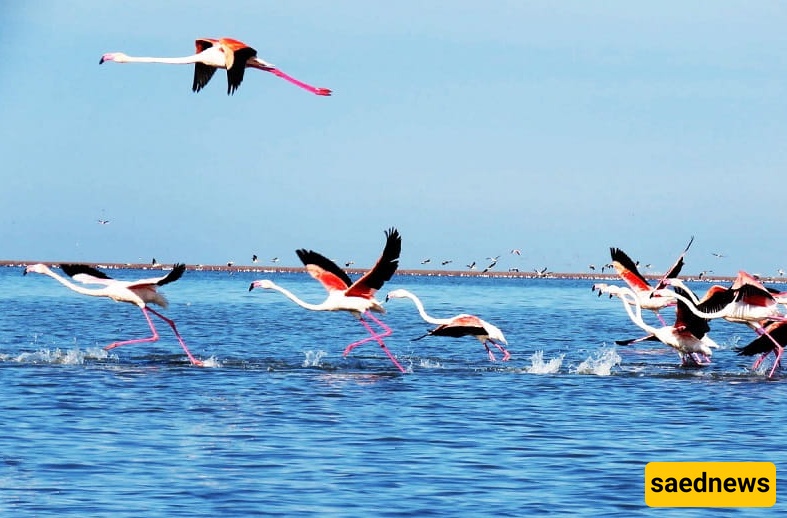
Another noteworthy fact about Ashuradeh is that about 40% of Iran's caviar is harvested near this island. Ashuradeh caviar is world-renowned and considered among the finest in the world. Besides caviar, various fish species such as white fish, carp, kalama, mash, sturgeon, catfish, and beluga are also found and fished in this area.
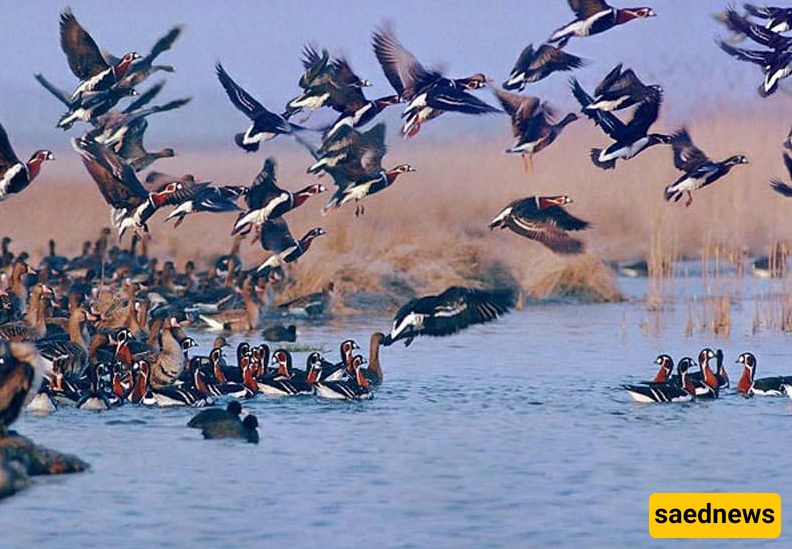
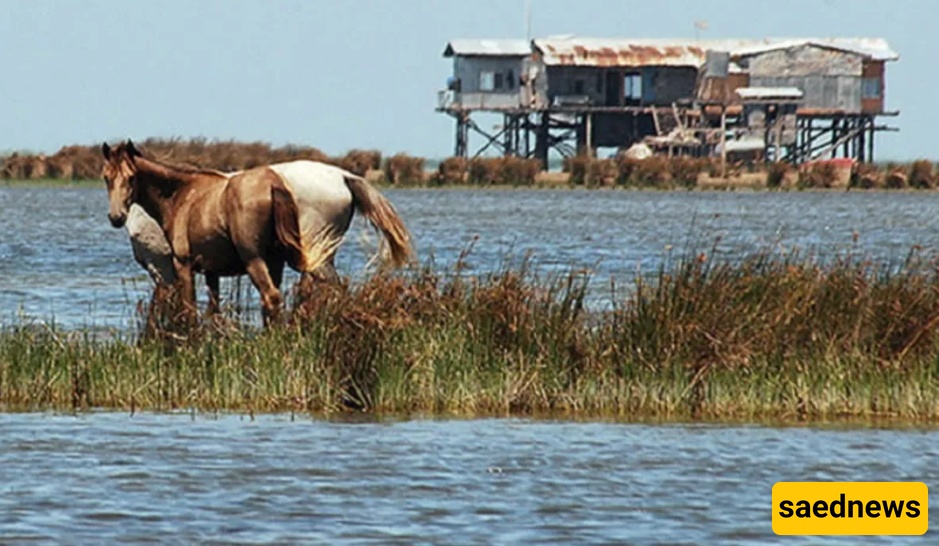
To reach Ashuradeh Island, you need to go to Bandar Turkmen and take a boat from there to the island. The boat ride from Bandar Turkmen pier to the island takes only 10 minutes. Round-trip boat tickets to Ashuradeh are sold, and you can schedule your return time with them. This way, the length of your visit on the island is your choice, and you can return to the pier whenever you like. According to summer 2020 prices, boat tickets start from 70,000 tomans and up.
If you are driving from Tehran to Ashuradeh by car, the distance is approximately 387 kilometers. This route starts from Firuzkooh Road and continues through Qaem Shahr, Sari, then Behshahr, Galugah, and Kordkuy, finally reaching Bandar Turkmen.
You can also travel from Tehran to Gorgan by train and then continue to Bandar Turkmen and Ashuradeh Island. Bus or airplane are other options to reach Gorgan and then Ashuradeh Island.
Wooden Bridge of the Island
The wooden bridge is located at the island’s entrance and is one of the most popular spots in the area for photography.
Triangular Castle; A Remnant of Russian Occupation
In the north of Ashuradeh Island, there is a military fortress built by the Russians during their occupation of the island. The castle was renovated during Reza Shah’s reign and on January 30, 2005, it was registered as a national monument under registration number 11308. Unfortunately, due to neglect, it is currently on the verge of complete destruction.
The castle is shaped like an isosceles triangle with three circular watchtowers at its vertices. During the Russian occupation of Ashuradeh, it served as a military base and later became a military post during the Pahlavi era. The Russian castle had 11 rooms: three rooms at the base of the triangular structure and four rooms on each of the other two sides. It is said there was also a water reservoir inside the castle grounds.
The entrance of the castle features a semi-circular archway that still shows its past grandeur. The lengths of the two brick walls on the west and east sides are four meters each, and the base, which contains the castle entrance, is 54 meters long. The total area of this historic castle was 62,424 square meters. The Russians used bricks, mortar, sarooj (a traditional waterproof mortar), and iron in its construction. During Reza Shah’s time, cement mortar was used to restore the external walls. Because of its military purpose, the castle has no elaborate decorations except for a decorative frame without inscription or design above the entrance.
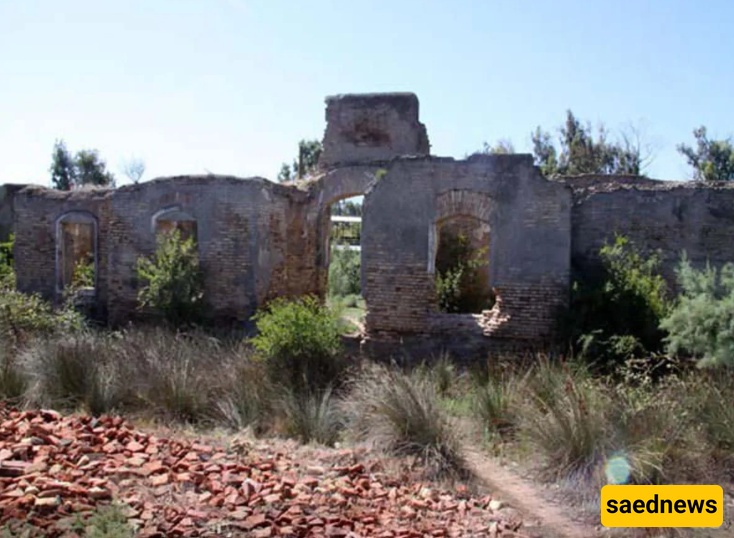
Safavid Fortresses of Ashuradeh
The ruins of Safavid fortresses on Ashuradeh show that this island was once a favored hunting ground of the Safavid kings.
Birdwatching is one of the most popular activities on Ashuradeh Island. This island is one of Iran’s largest wildlife sanctuaries and a prominent birdwatching destination. Every year in late autumn, many birds migrate to this area. Watching the breathtaking spectacle of various birds flying in flocks—including flamingos, gulls, Caspian pheasants, egrets, falcons, and more—is an unforgettable experience.
Ashuradeh is a pristine and quiet island. Walking in the silence of the island and listening to the sound of the sea waves is one of the most enjoyable activities you can do here. Other popular activities include observing the island’s sand dunes, sturgeon fishing scenes, fishing, nature photography, watching sunsets, swimming, picking raspberries and sour pomegranates, and boating around the island. Horseback riding on agile Turkmen horses is another exciting experience highly recommended—one that will leave lasting memories. On your trip to Ashuradeh at the Bandar Turkmen pier, you can also meet Turkmen men and women dressed in traditional clothing who proudly showcase their rich culture to visitors.
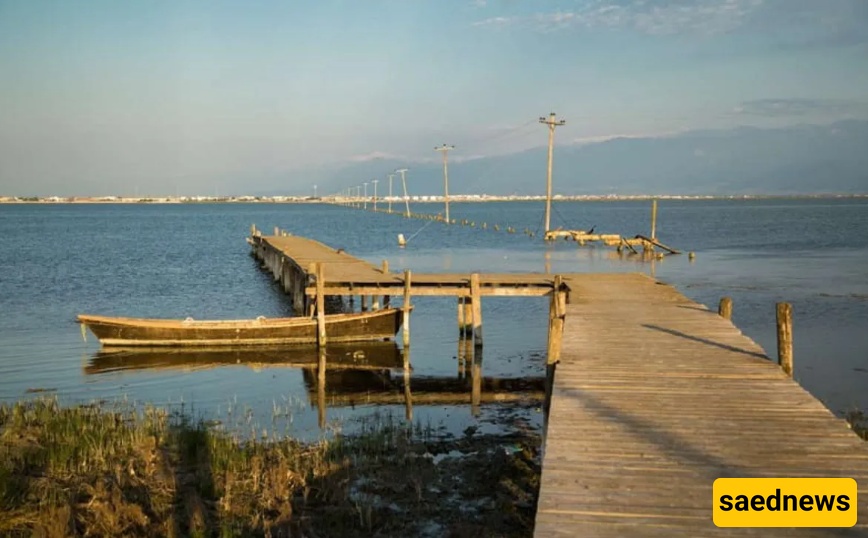
Ashuradeh Island has very limited facilities, so bring water, food, personal items, and a camera with you. Apart from a restroom and a restaurant named "Shelat," there is only one small supermarket on the island selling tea and snacks to tourists. At the Shelat restaurant, you can order a variety of fresh fish. Prices here are very reasonable, and the food quality is high.
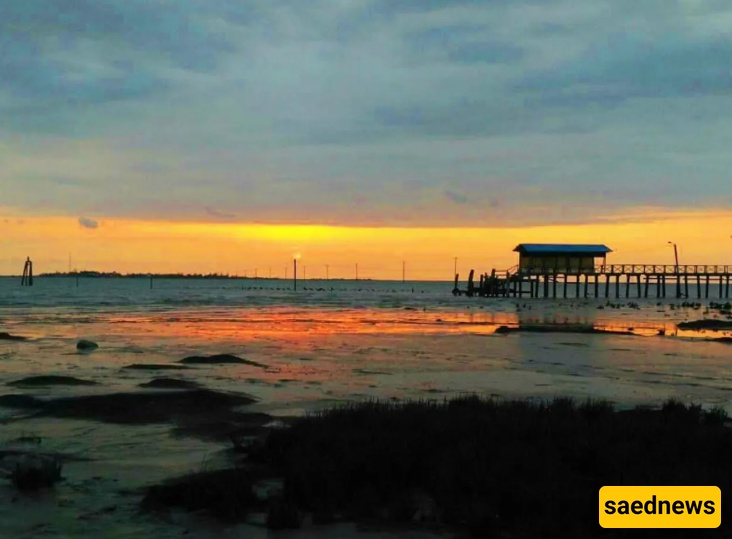
There are no luxury hotels, guesthouses, or inns on Ashuradeh Island. But don’t worry—you can drive about an hour to the city of Gorgan and stay in its hotels. You can also rent local houses or villas in Bandar Turkmen. Keep in mind that staying overnight on Ashuradeh is not common; however, some tourists do camp on the island.
Ashuradeh has a moderate and humid climate. The island experiences heavy rainfall and cold weather in the second half of the year, especially from late autumn to late winter. Therefore, it is recommended not to visit during this period. However, if your purpose is to see migratory birds, winter is the best season to visit. In this case, check the weather forecast before traveling and bring appropriate clothing and equipment.
The minimum temperature in winter is 7°C, and the maximum temperature in summer is 37°C. Spring on Ashuradeh welcomes you with pleasant and cool weather. During this season, trees and plants cover the entire island, and light rains multiply its beauty. Summers are humid and hot, so if you have difficulty with heat and humidity, avoid visiting in summer. According to many tourists, the best times to visit Ashuradeh are from early spring to early summer and early autumn when the weather is cool and comfortable, allowing you to fully enjoy the natural beauty.
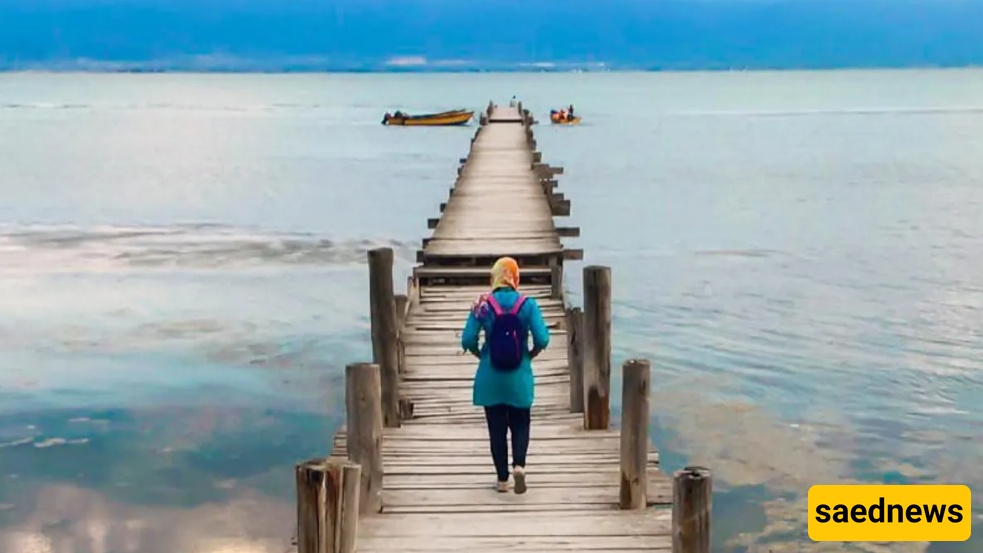
Miyankaleh Wetland; The Birdwatchers’ Paradise
Boats taking you to Ashuradeh often offer an additional trip to the Miyankaleh Wetland for an extra fee. Miyankaleh is one of Behshahr’s natural attractions, featuring pristine views and unique vegetation that attract many nature lovers. Its most notable feature is the incredible birdwatching during autumn and winter.
Watching the sunrise and sunset over Miyankaleh, accompanied by the birds’ songs, showcases the grandeur of nature. This wetland, also known as "Miyan Qaleh," is the last remnant of the semi-forested region of the Caspian Sea and covers about 70,000 hectares. In autumn, thousands of birds migrate here from various parts of the world, including northern Russia and Siberia, traveling hundreds of kilometers to find refuge. Migratory birds include flamingos, white-tailed sea eagles, pelicans, and various ducks and swans. The wetland is also a breeding ground for many fish species such as carp, mullet, whitefish, shovelnose sturgeon, and caviar fish, which provide livelihood for the local people.
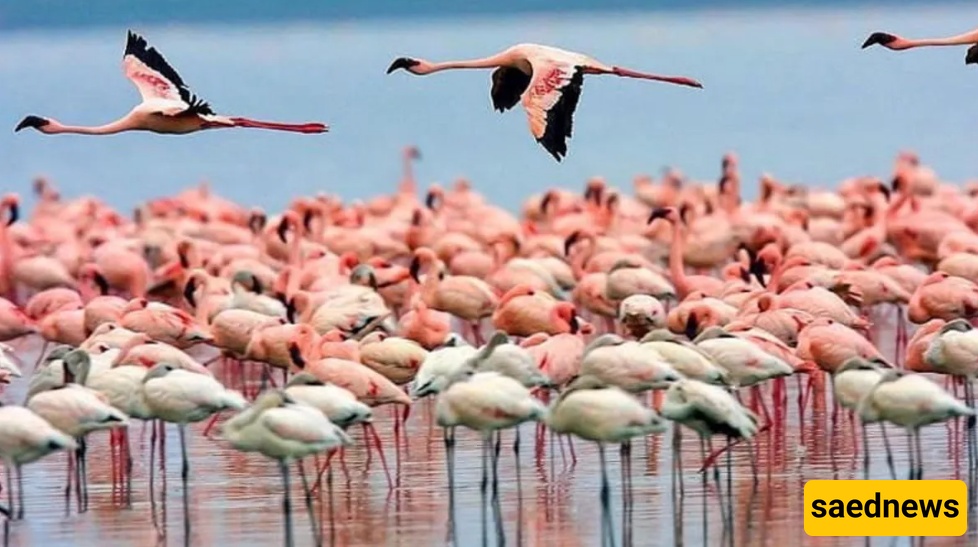
Turkmen Port Pier
In the past, Turkmen Port had three important piers, but at present, only one of them remains. This pier is located to the west of the city, on the eastern shore of the Caspian Sea. The Turkmen Port Pier is considered one of the main tourist attractions of Turkmen Port. Among the most popular tourist activities in this area are watching the sunrise or sunset, enjoying the panoramic view of Ashuradeh Island, and boating in the sea using motorboats or pedal boats.
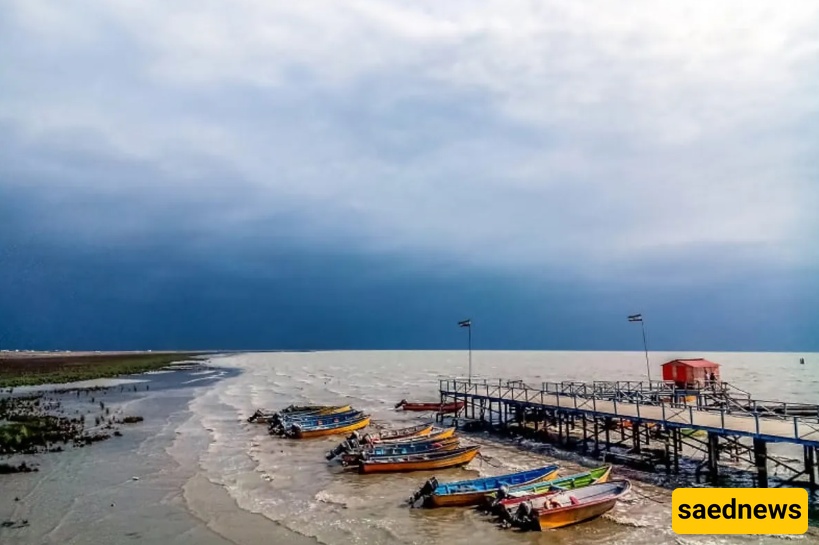
Turkmen Port Coastal Bazaar
The Turkmen Port Coastal Bazaar, located at the Turkmen Port Pier, is another place you must visit when traveling to Ashuradeh. This bazaar is the most important commercial center of the city, where you can purchase various famous Turkmen clothes and scarves, felt and Turkmen rugs, jewelry, cookies, and local sweets such as Qatlama, Pishmeh, and donuts. The coastal bazaar also has restaurants serving local Turkmen dishes such as burek.

Turkmen Port Monday Markets
To buy Turkmen Port handicrafts, head to the city’s famous Monday markets. In these markets, you can find everything from fish, dairy products, rice, and caviar to handicrafts, kilims, carpets, rugs, double-sided felt known as Qashma Geje, silk weaving, traditional clothing, and jewelry.
Gomishan Historical Area
The Gomishan Historical Area, with numerous tourist attractions such as the Gomishan Wetland, the Gomishan Mud Volcano (Naftalijeh), the Gorgan Defensive Wall, and houses with unique architecture dating back 150 years, is located 15 kilometers from Turkmen Port. It is one of the must-see sites near Ashuradeh Island.
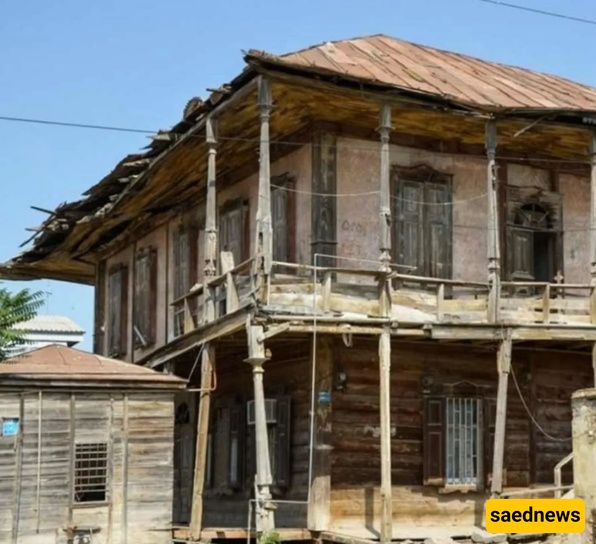
Bandar-e-Gaz
Bandar-e-Gaz is a coastal county located in the west of Golestan Province, just 12 kilometers from Turkmen Port. Covering an area of about 240 square kilometers, it is one of the most important tourist destinations in Golestan Province. Its natural and historical attractions include springs, rivers, waterfalls, the sea, dense forests, and also Mar Castle, Arous Castle, Ghadim Castle, and archaeological mounds.

The issue of transferring Ashuradeh Island to the private sector was first raised in 2004 during the administration of Seyyed Mohammad Khatami and the tenure of Masoumeh Ebtekar as head of the Environmental Protection Organization. At that time, the Alavi Foundation, affiliated with the Mostazafan Foundation, claimed ownership of the island. Sometime later, the foundation transferred parts of the island to a private company; however, after follow-ups by experts and environmental activists, the transfer was declared illegal.
During the administration of Mahmoud Ahmadinejad and the tenure of Fatemeh Vaez Javad in the Environmental Protection Organization, the transfer of Ashuradeh Island to the private sector was annulled following action by the General Inspection Organization of Iran. However, at the end of Ahmadinejad’s presidency, the investment rights for Ashuradeh were granted to a dairy company named “Sabbah Ebrahimi Dairy Company,” which sparked widespread criticism.
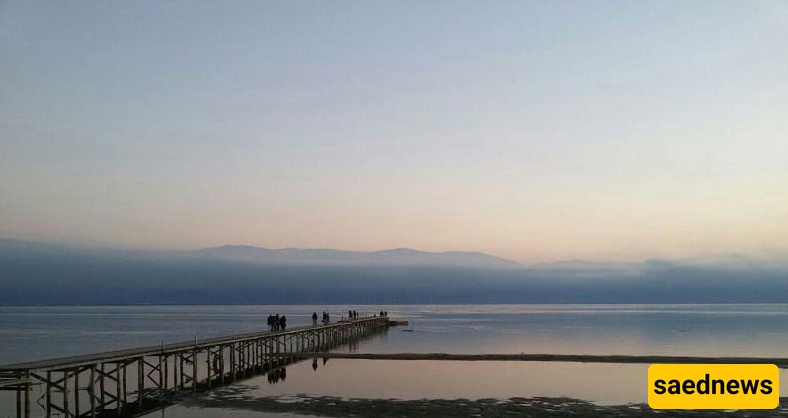
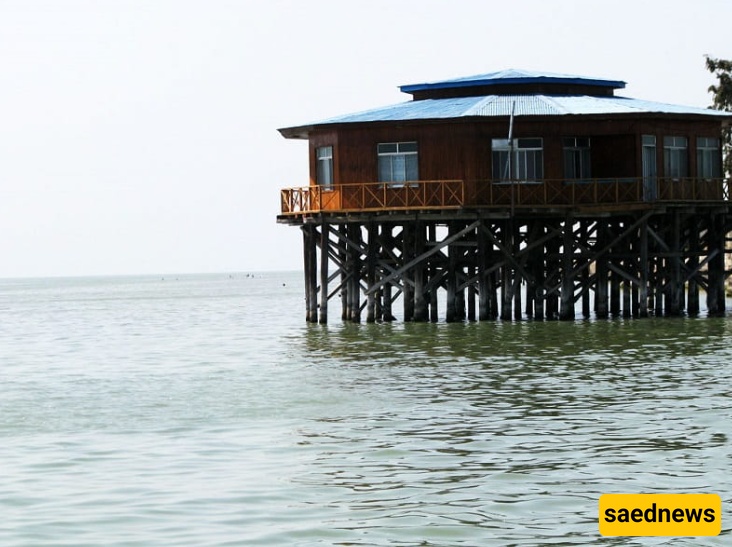
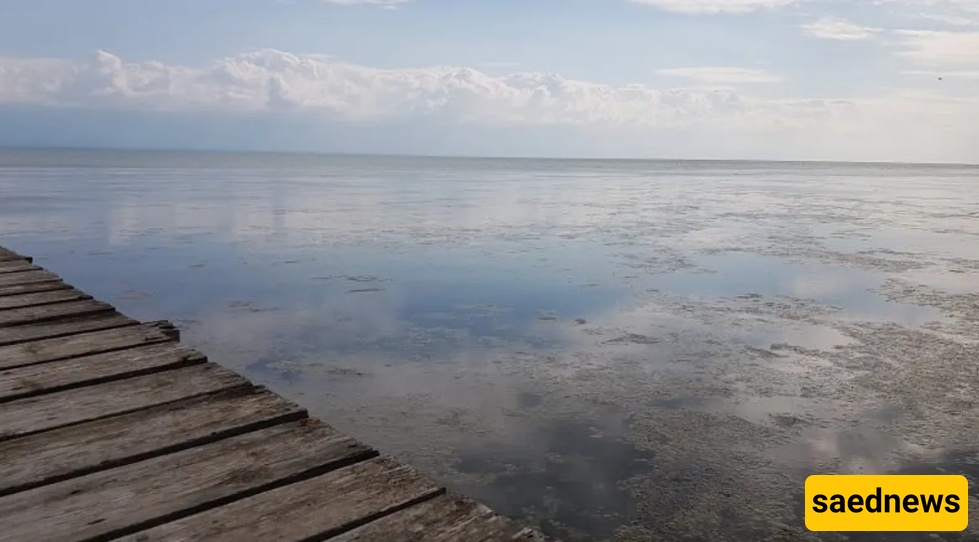
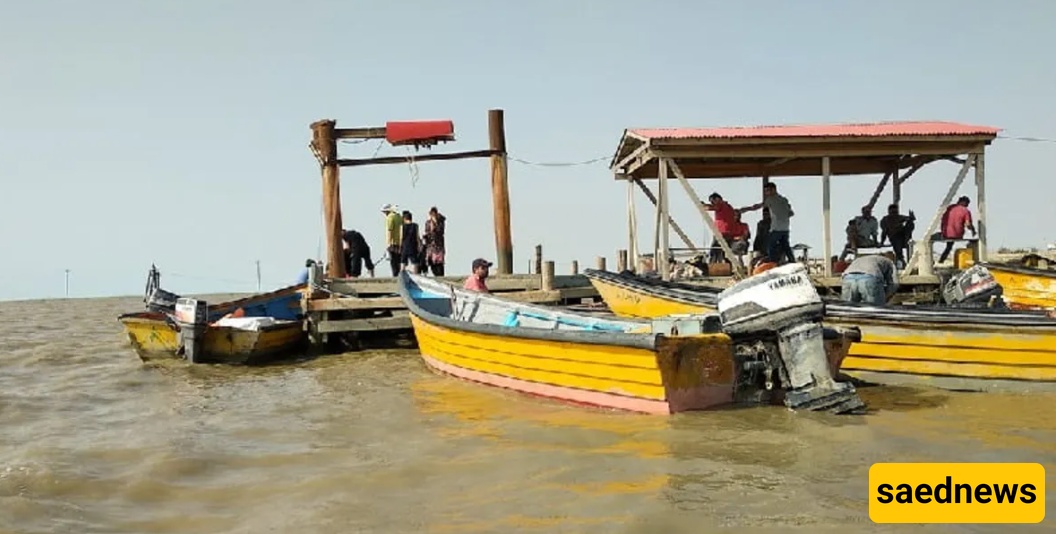
After Hassan Rouhani’s administration came to power and Masoumeh Ebtekar returned as head of the Environmental Protection Organization, the case was reviewed again in 2014, and it was decided that part of the area would be handed over to the private sector. Plans included building a hotel, commercial center, shooting range, multiple markets, golf and tennis courts, a bird garden, museum, amusement park, restaurants, traditional tea houses, separate beaches for men and women, boating facilities, roads, and other tourism infrastructure in Ashuradeh. Ebtekar, however, denied the full transfer of Ashuradeh Island, stating:
“Only 10% of Ashuradeh is designated for eco-tourism, and the transfer of this area is in no way possible since it is part of the national lands. Moreover, a framework has been set for eco-tourism in Ashuradeh, and heavy activities such as encroachment and destruction will not take place, and the Environmental Protection Organization will not allow such actions.”
Following the inauguration ceremony of the National Tourism and Eco-Tourism Project of Ashuradeh Island and the groundbreaking of construction in 2018, a conflict began between environmental advocates and executive officials in Golestan. Environmental experts succeeded in reducing the planned tourism area from 380 hectares to 38 hectares. In the new plan, only 22 hectares are allocated as a concentrated tourism zone adjacent to the current abandoned residential area of Ashuradeh. The advisor for wetland ecosystem management announced:
“The Ashuradeh tourism project has been changed to an eco-tourism project due to environmental considerations; however, there is still concern that the executing agencies may not act according to eco-tourism standards and environmental sensitivity in such areas.”
After the start of construction for the Ashuradeh tourism project, environmental advocates again filed complaints demanding a halt to the project. During this period, Golestan officials, aiming to speed up the transport of construction materials to Ashuradeh, built a 700-meter-long, 10-meter-wide road on the coastal lands of Turkmen Port toward Gorgan Bay to allow docking and easier transport of materials to the island. However, the judiciary ordered the halt of this road construction. Following the order to stop building the access road, environmental advocates continued their legal action, and in June 2020, the Judicial Deputy of the Attorney General’s Office ordered the complete suspension of the Ashuradeh tourism project.
In the latest developments, in April 2021, the Golestan Governor’s Office announced that the eco-tourism permit for Ashuradeh Island had been approved by the Supreme Council for Architecture and Urban Planning of Iran, and during the fourth session of the National Committee for the Coordination and Management of Wetlands, the project received a positive vote. Unfortunately, it appears that despite the efforts of environmental advocates and the ban on creating tourism areas within the four designated protected environmental zones, Ashuradeh is set to become a tourism hub for Golestan Province—a plan that is by no means aligned with proper eco-tourism principles.
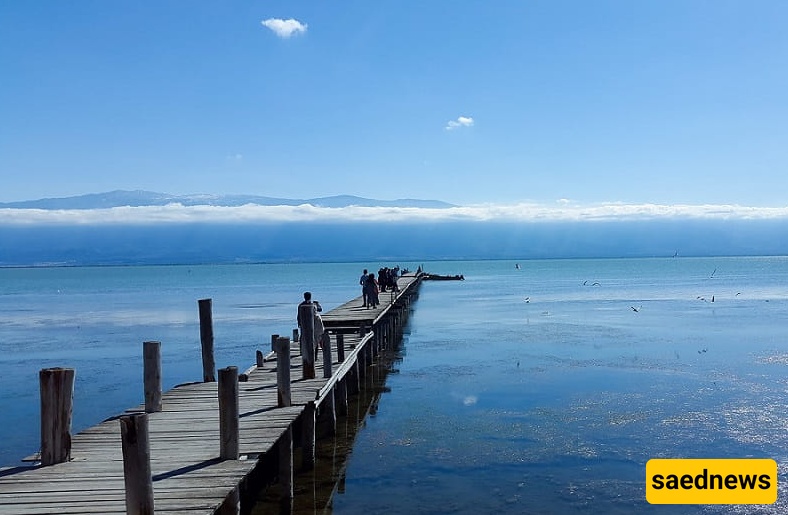
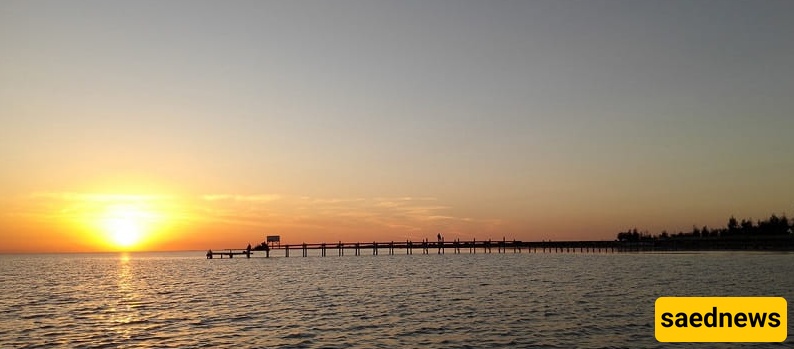
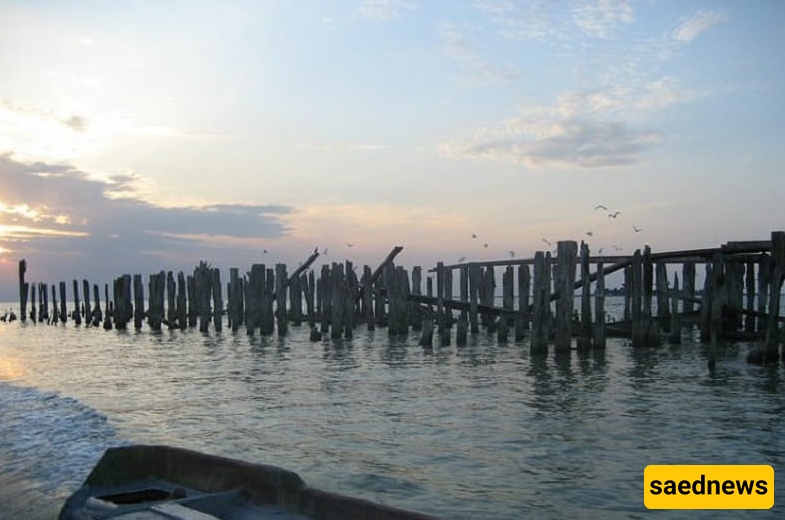
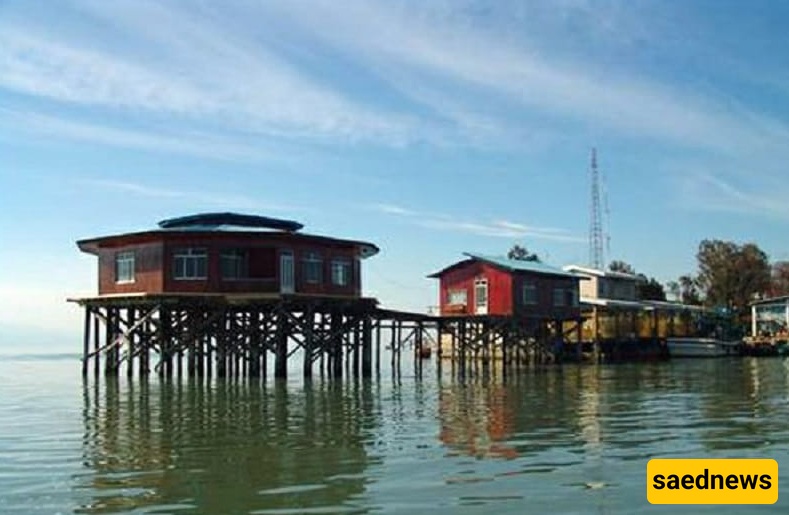
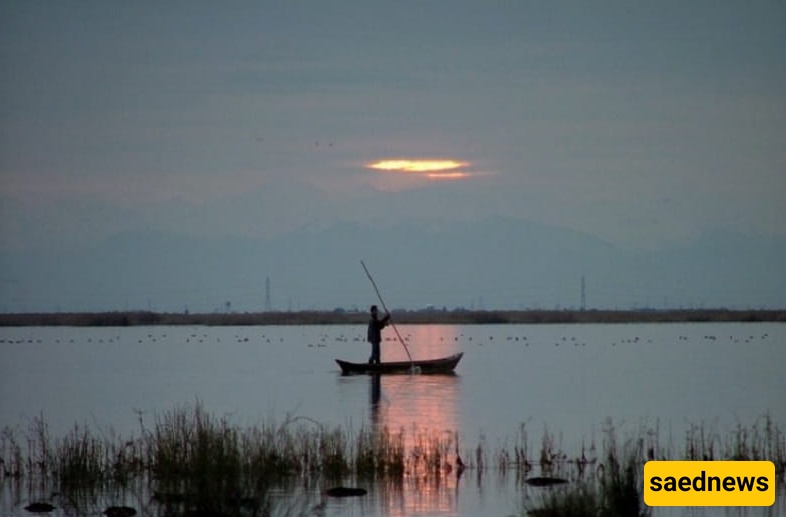
The Caspian Seal Conservation Center of Iran stated in April 2021 that Ashuradeh Island hosts the largest population of Caspian seals on the northern shores of Iran, and compromising the security of this area would mean serious harm to the habitat of this species and would violate international agreements. Arouhahi, the wetland ecosystem management advisor, also stated:
“Anyone familiar with eco-tourism principles knows well the problems that tourism and eco-tourism projects in sensitive zones such as Ashuradeh can cause for the area and for endangered species such as the Caspian seal. While proper use can generate income for local communities, in the case of the Ashuradeh eco-tourism project, investments will come from both government and the private sector, and it seems unlikely that local communities will benefit.”

